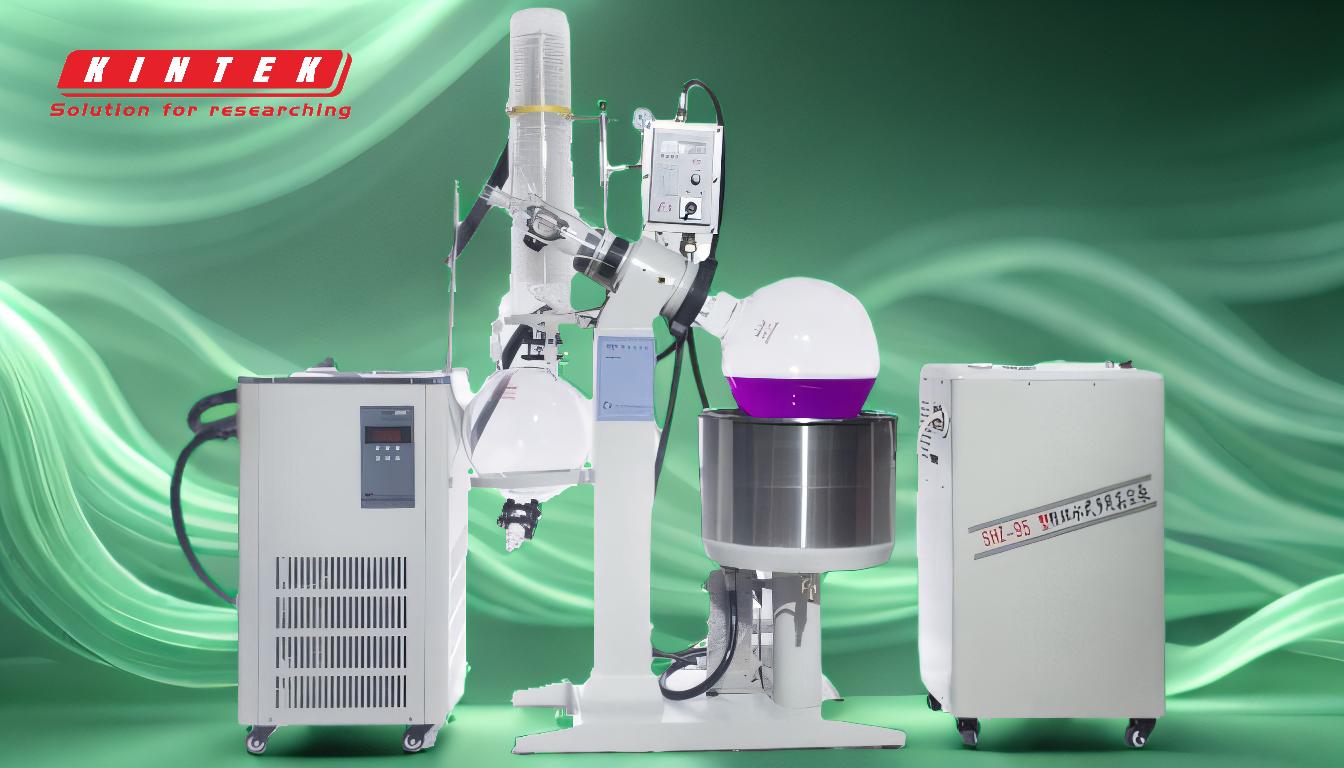Short path distillation is a highly efficient and versatile separation technique that offers numerous advantages over traditional distillation methods. It operates under reduced pressure and lower temperatures, making it ideal for purifying temperature-sensitive compounds. The short distance between the evaporative surface and the condenser minimizes product loss and reduces the likelihood of reflux, resulting in faster and more precise separations. Additionally, its compact design, low thermal stress on products, and ability to handle small quantities with minimal waste make it suitable for industries such as pharmaceuticals, food, and petroleum refineries. Its fast throughput and ease of use further enhance its appeal for time-sensitive and budget-conscious applications.
Key Points Explained:

-
Lower Boiling Temperatures and Reduced Pressure:
- Short path distillation operates under vacuum conditions, which significantly lowers the boiling points of substances. This is particularly beneficial for heat-sensitive compounds that may degrade at higher temperatures.
- By reducing pressure, the process minimizes thermal stress on the product, preserving its integrity and quality.
-
Minimized Product Loss:
- The design of short path distillation ensures that the distillate travels a very short distance from the evaporative surface to the condenser. This reduces the chances of product adhering to the walls of the equipment, which is a common issue in other distillation methods.
- As a result, there is less waste, and the yield of the desired product is higher.
-
Enhanced Efficiency and Precision:
- The short distance between evaporation and condensation reduces the likelihood of reflux, a phenomenon where condensed vapor re-evaporates and re-condenses, leading to inefficiencies.
- This streamlined process allows for precise separations, even for complex mixtures, and is particularly useful for achieving high levels of purity.
-
Faster Throughput:
- Short path distillation can achieve separation in seconds, compared to hours in conventional methods like fractional distillation. This is due to the combination of vacuum pressure and the short travel distance of the vapor.
- The rapid processing time makes it ideal for industries with time-sensitive materials and production cycles.
-
Suitability for Heat-Sensitive Compounds:
- The ability to operate at lower temperatures prevents the breakdown or degradation of heat-sensitive molecules, which is a significant advantage in industries like pharmaceuticals and food processing.
- This feature ensures that the final product retains its desired properties and quality.
-
Compact and Cost-Effective Design:
- Short path distillation systems are typically smaller and require less space compared to traditional distillation equipment. This makes them suitable for labs or facilities with limited space.
- Despite their compact size, these systems maintain high product quality and are cost-effective, making them accessible for smaller-scale operations or budget-conscious users.
-
Versatility Across Industries:
- Short path distillation is widely applicable in various industries, including pharmaceuticals, food and beverage, essential oils, and petroleum refineries.
- Its ability to handle small quantities with minimal loss and its adaptability to different types of compounds make it a valuable tool for achieving high-purity separations.
-
Low Thermal Stress and High Purity:
- The process minimizes thermal stress on the product, ensuring that sensitive compounds are not exposed to high temperatures for extended periods.
- This results in a high-purity final product, free from contaminants or degradation byproducts.
-
Ease of Use and Control:
- Operators have better control over the parameters and operating procedures in short path distillation, allowing for fine-tuning of the process to achieve optimal results.
- The simplicity of the system design also makes it user-friendly, reducing the learning curve for new operators.
-
Environmental and Economic Benefits:
- The reduced waste and energy efficiency of short path distillation contribute to lower operational costs and a smaller environmental footprint.
- These benefits align with the growing demand for sustainable and cost-effective industrial processes.
In summary, short path distillation stands out as a superior method for separating and purifying compounds, particularly those that are heat-sensitive or require high levels of purity. Its advantages in terms of efficiency, speed, and versatility make it a preferred choice across a wide range of industries.
Summary Table:
| Advantage | Description |
|---|---|
| Lower Boiling Temperatures | Operates under vacuum, reducing thermal stress and preserving product integrity. |
| Minimized Product Loss | Short travel distance reduces waste and increases yield. |
| Enhanced Efficiency and Precision | Streamlined process for precise separations and high purity. |
| Faster Throughput | Rapid processing, ideal for time-sensitive applications. |
| Suitability for Heat-Sensitive Compounds | Prevents degradation of sensitive molecules. |
| Compact and Cost-Effective Design | Space-saving and budget-friendly for small-scale operations. |
| Versatility Across Industries | Applicable in pharmaceuticals, food, essential oils, and more. |
| Low Thermal Stress and High Purity | Ensures product quality with minimal thermal exposure. |
| Ease of Use and Control | User-friendly design with precise parameter control. |
| Environmental and Economic Benefits | Reduces waste, energy use, and operational costs. |
Discover how short path distillation can optimize your processes—contact us today!









